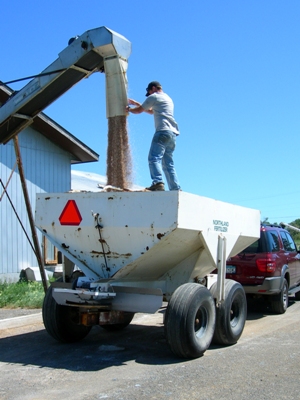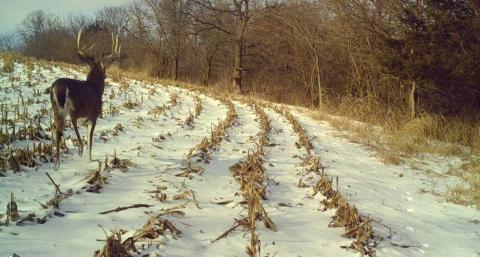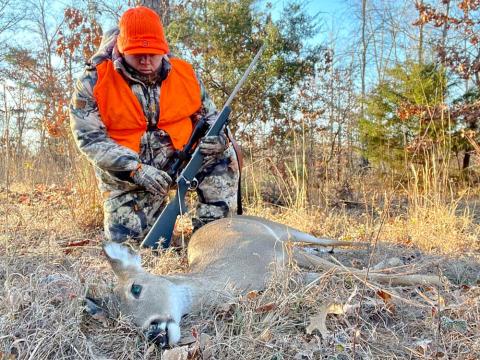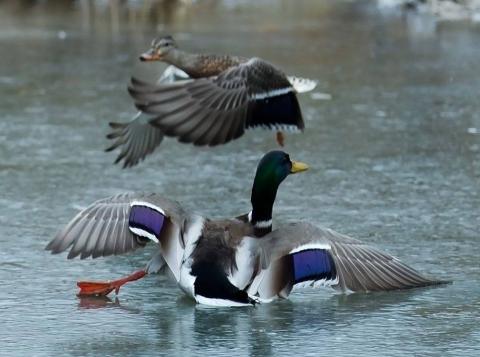September 25 – October 12
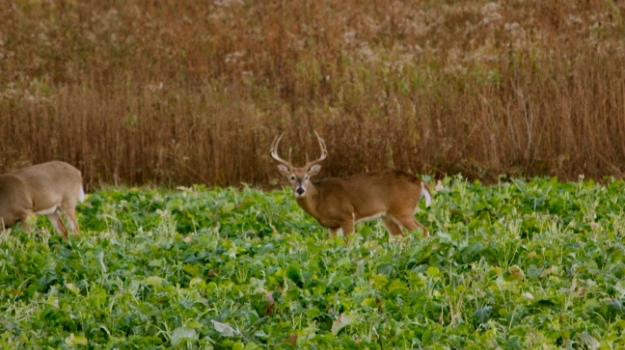
Editor’s Note: Mark and Terry Drury have been a part of the Mossy Oak family as long as there has been M.A.D. Calls and Drury Outdoors that produces videos and TV shows. But the history of the Drury brothers and Mossy Oak goes back even farther than the history of Drury Outdoors. Mark Drury was a salesman for Mossy Oak in Missouri, Iowa and Kansas while in college, but Mark did more than sell Mossy Oak camouflage. He was one of the early members of the Mossy Oak family. When Mark and his brother Terry founded Drury Outdoors, Mossy Oak was right there for them and with them. According to Terry Drury, “Some of our best friends in the early days were Toxey Haas, the creator of Mossy Oak, and his dad, Fox Haas, Ronnie “Cuz” Strickland, Bill Suggs and the late Bob Dixon. Our company and our family plans to continue with Mossy Oak, until we go out of business, or we pass away.” Drury Outdoors produce “Bow Madness,” “Dream Season,” and “Thirteen,” all TV shows airing on the Outdoor Channel. The company also produces “Natural Born,” which airs on the Pursuit Channel. Also “King of the Spring” may return in the spring of 2015 on the Outdoor Channel. “Our show, ‘Thirteen’ is the way Mark and I have divided-up deer season from what we've observed, documented and used to predict the movement patterns of older-age-class bucks throughout the 13 weeks of deer season,” Terry Drury explains. “In the 13 weeks that the show airs, we’ll be sharing all the information we have and use each season to consistently take trophy bucks all across the United States. We also allow the viewers to see the mistakes and blunders that we make as well as our successes.”
During this phase, if you're checking your trail cameras regularly, you'll see that daylight activity begins to pick up. Older-age-class bucks will start moving during daylight hours. Also, at this time of the year, you'll have more solid and dependable wind direction. The bucks will come to green fields quite a bit, and the bucks are starting to scrape a little.
There’s a minimum amount of sparring happening. Even though bucks are sparring some, I don’t use rattling antlers to try to call a buck. I don’t like to use any deer call until the timing for that call is best. There's some sparring at this time of year, because the bucks are trying to establish their pecking order. They’re not really trying to fight for the right to breed or to protect their home range from bucks that are coming through it looking for does. You rarely, if ever, see all-out, full-blown buck fights at this time of the year.
During the Greener Pastures Phase is when bucks have feeding on their minds. They’re trying to store up fat for the onset of winter. So, this time is a great time to go to green fields, adjust your binoculars and visually see mature bucks that you may want to harvest later in the season. You want to learn where they enter the green fields, where they leave the green fields, and where they like to hang out on the green fields. We believe the most critical information that leads to deer hunter’s success is MRI - Most Recent Information. At this time of year, you also need to check your trail cameras and know the trails the mature bucks are using to come to the green fields. Try to look for stand sites where you can put up a tree stand or ground blind to get a shot at bucks you’ve identified as shooters.
Also, you need to remember during this Greener Pasture phase that if a mature buck is coming out on a green field regularly, more than likely, that buck is bedded extremely close to that green field. So, you have to be very cautious going to and coming away from your green fields. Most hunters do more damage to their hunting properties when they leave their observation points than they do when they come to look at the green fields. Remember, you’re still hunting. If there’s a mature buck on the green field, and darkness starts to fall, don’t come out of your stand, until the buck leaves the green field. The less information the buck has on you and where you like to be, the better your odds will be for taking him. If you spook that older-age-class buck two or three times at the same green field, then more than likely he’ll become completely nocturnal, and you won’t have a chance to take him during daylight hours.
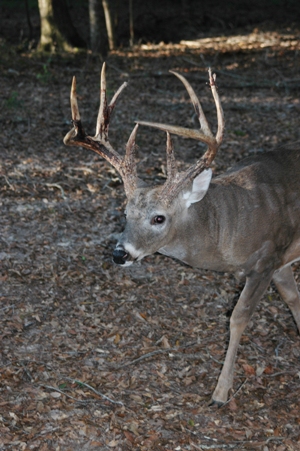 Mark’s and my deer hunting philosophy is to scout a lot more than you hunt. The more information you can gather, and the more tendencies you can recognize and define about an older-age-class buck, the better your odds of taking that buck when the conditions are the best. If there are some green soybean fields in your area, you may locate mature bucks in those fields at this time of the year. Often, acorns will start falling too. So, you want to identify the trees that are dropping their acorns first, and look for trails and deer signs around those acorn trees.
Mark’s and my deer hunting philosophy is to scout a lot more than you hunt. The more information you can gather, and the more tendencies you can recognize and define about an older-age-class buck, the better your odds of taking that buck when the conditions are the best. If there are some green soybean fields in your area, you may locate mature bucks in those fields at this time of the year. Often, acorns will start falling too. So, you want to identify the trees that are dropping their acorns first, and look for trails and deer signs around those acorn trees.
Our primary goal during Phase 2 is to know exactly where the mature buck’s bedding, and the trail he's taking to his food source. Mark and I have a saying we call, “Feed ‘em up.” Instead of putting a tree stand up where we know the deer will be feeding, we want to put our tree stand up close to where we know the buck will bed.
Too, during this time of the year, we want to identify the shooters (bucks we want to try and take this season), and identify the bucks we want to leave and not harvest. One of the secrets to our success is each season our cameras record about 1-million photos. We have numbers of trail cameras on a lot of different properties, and we check them regularly. Every night we study our trail-camera pictures. So, we know exactly which bucks to put on our hit list, and what bucks are on the pass list.
We want to determine how old these bucks are. If the bucks we’re seeing this year are bucks we have trail-camera pictures of from last year, we like to identify bucks and watch them from the time they're 2-1/2-years until they're 4 - 7 years old. We want to know if that buck loses antler points each year, whether he gains antler points each year, whether he has a heavier rack than he’s had the year before, and how much bigger his body is than the year before. During this Phase 2, we believe that we live or die by the information that we’re able to distill from our Reconyx trail cameras.
We not only want to pick out our shooter bucks, but we also have to know when those bucks become daylight movers. We also want to know when and where they move. Often, deer will be on one part of your property when they're in the velvet. But when they have hard horns, they may set-up camp in a different part of your property. We have to know this information when we get ready to try and take these bucks. You'll have a hard time keeping up with and determining the movement patterns of mature bucks on your property without using trail cameras.
Day 1: Terry Drury Explains What Thirteen Is
Tomorrow: Terry Drury Tells about Phase 3 – the October Lull of Deer Season – October 13- October 25
















